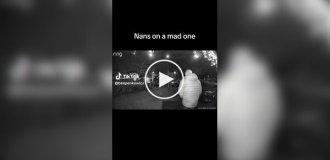Live and learn! And to study our smaller brothers indeed infinitely possible. For example, did you know that crocodiles do they really cry, and owls don't have eyeballs? We suggest you do small but informative break and learn something for yourself brand new. You are welcome to post and enjoy watching.
Llama has 3 "stomachs" 
More precisely, the stomach of llamas consists of 3 compartments. Such a structure helps them digest food more efficiently. And they spit the contents. Females spit away unlucky boyfriends when flirting with them uninteresting, and males thus scare away the aggressor.
Female ferrets could die if they don't find a male to mate with 
When female ferrets are ready to mate, they start produce the hormone estrogen. If mating does not occur, estrogen becomes so much that it causes damage to the bone marrow and blood cells and, as a result, the death of the animal.
Owls don't have eyeballs 
Owl eyes are shaped like eye tubes, not eyeballs. That's why owls can't roll their eyes and to see something they have to turn your head completely.
Crocodiles really cry 
The expression "crocodile tears", meaning feigned crying, has under a real basis. Crocodiles do shed tears, but not because they are sad: that is how they clear their eyes.
Kangaroos cannot move backwards and only move their legs when they are folded together. 
Due to the peculiarities of the skeleton and the long tail, kangaroos are not able to jump or walk backwards. Also, they cannot use one foot independently of the other (if they are not in the water), and to change direction, they need to turn their whole body. Here they are swimming moving both legs alternately.
Polar bears have black skin 
White fur helps these predators blend in with those around them. snowy expanses, but the skin underneath is black. Even their language black! Presumably, this color better protects the bears from ultraviolet radiation and helps to keep warm.
Frogs can see colors even in total darkness. 
In such darkness, where a person does not see anything at all, frogs able not only to see objects, but also to distinguish their colors. How known that our retina contains cones and rods responsible for recognition of objects and their colors. Frogs have a special structure sticks, so their vision in the dark surpasses that of a human.
Flamingos can only eat upside down. 
Flamingos feed on algae, seeds, larvae and small crustaceans that live in shallow water. To filter food they need to tilt their heads, pointing their beak towards their feet. After that they draw water into it, and then pour it through the comb plates along edges of the beak, leaving food inside.
Dragonflies can fly upside down and backwards 
Dragonflies are real aces of aerobatics: they do not only fly backwards forward and upside down, but also know how to hover at one point, sharply turn around 360 ° and sometimes accelerate to 55 km/ h. Such heights they reach, masterfully changing the inclination of the body and the position of the wings.
Horseshoe crabs have blue blood 
The blood of horseshoe crabs is blue because they aristocrats. Okay, joke. The fact is that it contains copper. And also she important for pharmacology: as it folds upon contact with bacteria, it is used to check if drugs contain bacteriological toxins. Don't worry after blood collection horseshoe crabs are released into the wild.
Octopuses have 3 hearts 
Octopus is another creature with blue blood, but the most what is striking about him is not that. Octopus has 3 seheart: central (it provides blood circulation) and 2 peripheral. Their task is pump blood over the gills, where it is oxygenated.
Cockroaches can live without a head 
Even if a cockroach suddenly loses its head, it can passably last for quite a long time. The point is that nervous tissues responsible for basic reflexes, as well as respiratory organs, distributed throughout its body, so that the insect is still will be able to move.
Add your comment
You might be interested in:





















